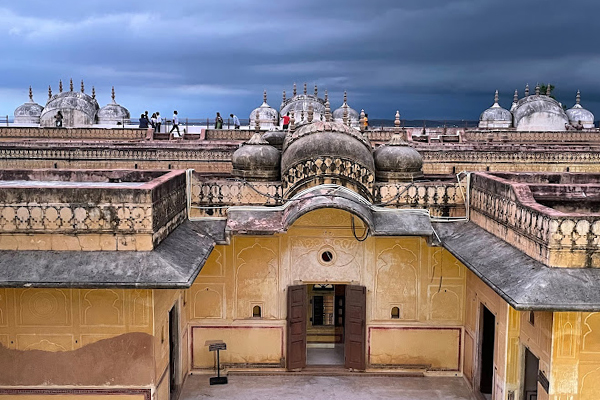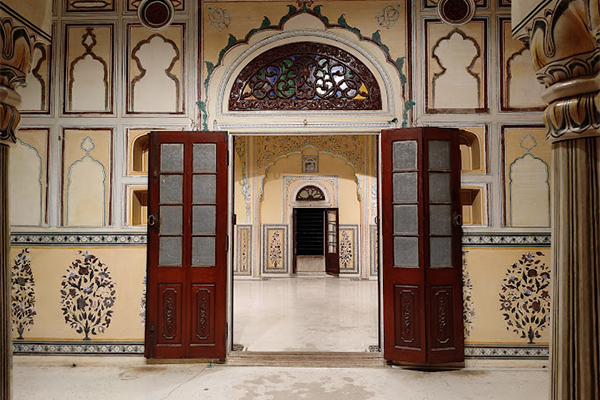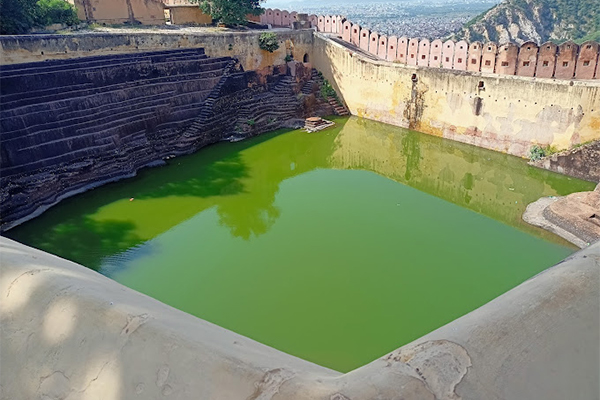A Glimpse into History
Construction: Built during the 18th century, Nahargarh Fort stands as a proud symbol of Jaipur’s heritage. Maharaja Sawai Jai Singh II, the founder of Jaipur, commissioned its construction. The fort’s name, Nahargarh, translates to “Abode of Tigers,” highlighting the challenging terrain it was built upon to protect the city from external threats.

Strategic Significance: Nahargarh Fort, along with Amer Fort and Jaigarh Fort, forms a strong defensive ring around Jaipur. Its strategic location provided the rulers with a vantage point to monitor the surrounding valleys and plains, making it a crucial part of Jaipur’s defense system.
Architectural Marvels
Design and Layout: The fort’s architecture is a fine example of Rajput military craftsmanship. It boasts a unique blend of Indian and European architectural elements. The layout of the fort includes multiple courtyards, interconnected chambers, and a network of narrow staircases. This intricate design adds an element of mystery and excitement to the exploration of Nahargarh Fort.
Palaces and Residences: Nahargarh Fort houses several palaces, including Madhavendra Bhawan. This palace consists of suites for the king and his queens, each with its own kitchen and living area. The design ensures that privacy was maintained for the royal family.
Step Wells: The fort also features step wells, known as ‘baolis.’ These wells served as a source of water and were designed with impressive architectural precision. Their intricate design is a testament to the importance of water conservation in Rajasthan’s arid climate.


Captivating Views
Sunset Point: One of the most enchanting aspects of Nahargarh Fort is its panoramic views. Sunset Point, as the name suggests, is a popular spot to witness the breathtaking spectacle of the sun setting over the Pink City. The fort offers an unobstructed view of Jaipur’s cityscape, with the iconic Hawa Mahal and City Palace standing out.
The Great Wall: Nahargarh Fort is also known for its ‘Great Wall of Nahargarh.’ This winding fortification stretches across the hills, and a leisurely walk along its path provides mesmerizing views of the surrounding landscape.
Visiting Nahargarh Fort
Location and Accessibility: Nahargarh Fort is conveniently located just 15 kilometers from Jaipur’s city center. Visitors can easily reach the fort by road, and there are ample parking facilities available. The journey to the fort is an adventure in itself, as you wind your way up the Aravalli Hills.
Entry Fee and Timings: The entry fee to Nahargarh Fort is affordable, making it accessible to all. The fort is open to visitors from 10:00 AM to 5:30 PM, ensuring ample time to explore its marvels.
Exploring Nahargarh Fort: What to Expect
Heritage Walks: Guided heritage walks are available for those who want to delve deeper into the history and stories of Nahargarh Fort. Knowledgeable guides share fascinating tales of the fort’s past, adding depth to your visit.
Photography Paradise: Photographers will find Nahargarh Fort a paradise for capturing stunning shots of both history and nature. The play of light and shadows within the fort creates captivating frames for photography enthusiasts.
Local Cuisine: After exploring the fort, visitors can indulge in Rajasthani cuisine at the onsite restaurant. Savor traditional dishes like dal baati churma and gatte ki sabzi while enjoying the rustic ambiance.
